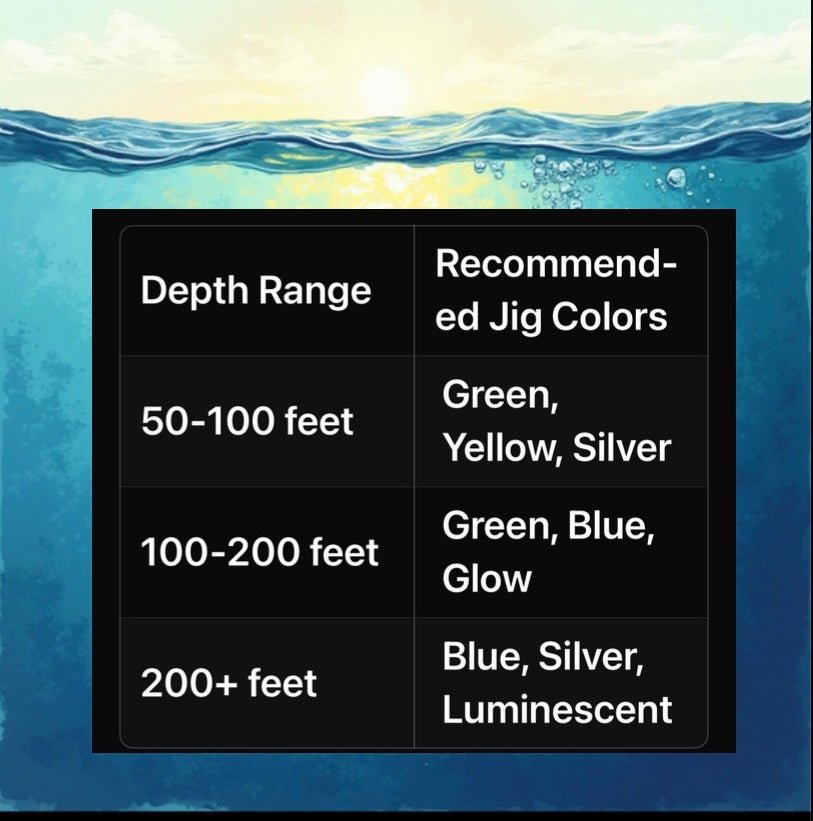
Picking the right color for your slow pitch jig.
Slow pitch jigging has become a go-to method for anglers chasing big fish in deeper waters. Unlike traditional jigging with its fast, aggressive retrieves, slow pitch jigging techniques use a rhythmic, deliberate motion to mimic a wounded baitfish. Whether you’re targeting snapper, grouper, or amberjack, success often hinges on one overlooked factor the color spectrum and how it shifts the deeper you fish in the water column.
How Water Filters Light
Water naturally filters sunlight, altering how colors appear underwater. As you drop your slow pitch jig into the depths, the visible spectrum changes due to light absorption and scattering. Here’s how it breaks down for deep water fishing:
• Red: Fades fast, often within 10-15 feet. By 30 feet, it’s nearly invisible.
• Orange: Disappears by 50 feet in most conditions.
• Yellow: Starts fading around 70 feet, gone by 100 feet.
• Green: Holds strong up to 150-200 feet in clear water.
• Blue: Rules the deep, visible beyond 200 feet.
• Violet: Fades earlier than blue but can linger slightly.
At 300 feet or more—prime territory for slow pitch jigging—blue and some green dominate. This shift impacts how fish see your jig, making color selection a key part of your slow pitch jigging gear.
Why Color Matters in Slow Pitch Jigging
Fish in deep water rely on sharp vision to hunt, especially in the clear zones where slow pitch jigging excels. The best jig colors can make your lure stand out as prey or fade into the background. In shallow water, bright reds and oranges might trigger strikes from species like snapper. But in deeper water fishing, those colors turn dull gray or black as red wavelengths vanish, reducing their appeal.
For slow pitch jigging techniques at depth, blue, green, and reflective finishes like silver or holographic are top performers. These hues either blend with the ambient light or catch faint rays, creating a flash that mimics baitfish scales. Many anglers also rave about glow-in-the-dark or UV-reactive jigs, which emit light or reflect wavelengths fish can detect, giving you an edge in low-light conditions.
Adapting to the Depths
When planning your slow pitch jigging setup, match your jig color to your target depth:
• 50-100 feet: Green, yellow, or silver still shine for slow pitch fishing.
• 100-200 feet: Go for green, blue, or glow finishes in your slow pitch jigging gear.
• 200+ feet: Blue, silver, or luminescent jigs are the best jig colors for deep water.
Water clarity plays a role too—murky conditions dim colors faster, so reflective or glowing slow pitch jigs can boost your odds.
Final Thoughts
Mastering slow pitch jigging is a blend of art and science, and understanding the color spectrum in deep water fishing adds a strategic twist. Next time you’re gearing up for a slow pitch jigging trip, think about where your jig will drop and how fish will spot it. Picking the right color from your slow pitch jigging tackle could turn a slow day into a trophy catch. You can find all the jigs needed for all depths at https://www.krakenjigz.com
-Chris
